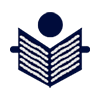


01 Mar 2023
// FDA
https://www.pharmacompass.com/pdf/news/enforcement-report-week-of-march-1-2023-82562.pdf

03 Sep 2019
// CLINICALTRIALSARENA
https://www.clinicaltrialsarena.com/news/boehringer-pradaxa-re-spect-cvt-data/

04 Nov 2018
// Zach Brennan RAPS
https://www.raps.org/news-and-articles/news-articles/2018/11/warfarin-monitors-fda-warns-of-inaccurate-results?utm_source=MagnetMail&utm_medium=Email%20&utm_campaign=RF%20Today%20%7C%202%20November

01 Oct 2018
// Jonas Söderström ENDPTS
https://endpts.com/a-swedish-biotech-is-targeting-thrombosis-using-the-bodys-own-defense-system-to-prevent-blood-clots-with-lower-risk-of-bleeding-associated-with-current-antithrombotic-therapies/

10 Aug 2018
// SEEKING ALPHA
https://seekingalpha.com/article/4198015-miss-bristol-myers-squibb-2018

15 Mar 2017
// Lisa Rapaport REUTERS
http://www.reuters.com/article/us-health-stroke-afib-anticoagulants-idUSKBN16M1ZQ